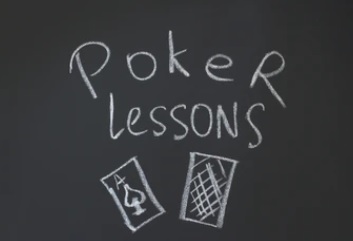Why You People Need Help
I’ve seen quite a few posts recently in the Small Stakes No-Limit Hold’em forum that center around a multi-player hand that was handled in a really poor way just because someone didn’t adhere to the basics concepts that drive strategy in these scenarios.
The thematic mistake is treating a multi-player hand like it’s heads-up, and this approach leads to major errors.
We’re going to show you the basic ideas that drive situations for value betting, bluffing and calling in multi-player spots to show you how they differ from heads-up play. Hopefully you guys will learn something from this so I can stop wanting to beat my head over the keyboard when I see people make the same mistakes over and over again.
Bluffing Into Multiple Opponents
Fold equity is the percentage of the pot that you expect to get from all of your opponents folding. Suppose you have a $10 pot to start a street, and you expect your opponent to fold to your bet 60 percent of the time. Because 60 percent of $10 is $6, that’s your fold equity in a nutshell.
Now compare this to playing against two Villains who both fold 60 percent of the time each on average. You’ll only take the pot down about 36 percent of the time with a bluff in this situation. That’s a drastic change even though your opponents will be folding the same amount of the time individually.
Key Concept #1: Fold equity means much, much less when you’re bluffing into multiple opponents.
Along these lines, pure bluffs will rarely have a place when you’re betting into multiple people, but semi-bluffs can maintain a fair level of profitability.
Value Betting Into Multiple Opponents
Here’s a very strong model for thinking about multi-way value betting: Imagine there’s a barrel, and everyone in a hand is putting money into that barrel. To be profitable, you have to take a higher percentage of money out of the barrel than what you put in. Now let’s use this model in an example.
Suppose you’re value betting on the river into two opponents. When just one of them calls, you expect to have 55 percent equity at showdown, and when both of them call, you expect to have 35 percent equity at showdown. Ignoring the effects of the rake for the sake of example, will you always be profitable with this value bet?
The answer is yes, and here’s why. When you’re called once, you’re putting in 50 percent of the money that goes into the barrel because both you and your opponent will be putting in an equal amount on that betting street. Since you’re getting out 55 percent, that’s more than you put in, so you’re profitable.
What about the case where they both call? You’re putting in 33.3 percent of the money into the barrel since three people (including yourself) are contributing on that betting streak. Since you’re taking out 35 percent (your showdown equity), then you’re going to be making a profit.
Key Concept #2: You don’t always need more than 50 percent equity at showdown for a value bet to be profitable in multi-way scenarios.
This means that choosing bet sizes with super-strong hands is much more complicated in multi-way scenarios because you have to take into account the fact that smaller bet sizes are more likely to be called multiple ways.
Calling Down Among Multiple Opponents
This is the concept that’s the hardest to account for in multi-player spots because there are a few different cases. The first case is when you’re in relative position, and what I mean by in relative position is that you’re going to be the last person to act to close out the street.
Relative Position
Being last to act when facing a bet doesn’t necessarily mean that you’re the last to act on the hand as a whole. Suppose you have UTG, MP and BU together in a hand on the river. If MP has the betting lead, then UTG actually has the best relative position because he will be the last person to act. Being on the button means a lot less in this scenario if the MP has the betting lead.
Key Concept #3: Relative position is very important in multi-way hands when you do not have the betting lead. Make sure that you understand it and that you do not take your absolute position (ie: having the button) for granted.
When You’re Last to Act
If you’re last to act, then calling down in a multi-way scenario is a lot easier. Generally the pots are going to be larger relative to the bet size, so you’ll want to call down more often if you look at things purely in terms of pot odds. The problem with this approach is that your chances of winning are also going to be a bit lower since you’re up against multiple opponents. The fact that you can’t just pick off bluffs (since the third person has a good enough hand to call) really throws off the intuition of players who find themselves in these spots.
Key Concept #4: Don’t fall into the trap of calling down too often in position when multi-way. Your pot odds improve, but your chances of winning drop drastically with mediocre holdings.
When You Aren’t Last to Act
Things get even worse when you aren’t the last player to act. With people left to act behind you, you have to take into account the possibility that they will raise. Not only can they raise if they have you beat, but you can also get bluff raised from time to time which will put you in a position to fold the best hand which drastically cuts down your EV.
Key Concept #5: Pay close attention to how the players behind you play when calling down multi-way. Getting bluffed off of the best hand in a big pot kills your win-rate.
Overall, if you follow these five key concepts, you’ll stop making a lot of the common mistakes that I’m seeing in multi-way spots lately on the forums.
Submit your review | |









